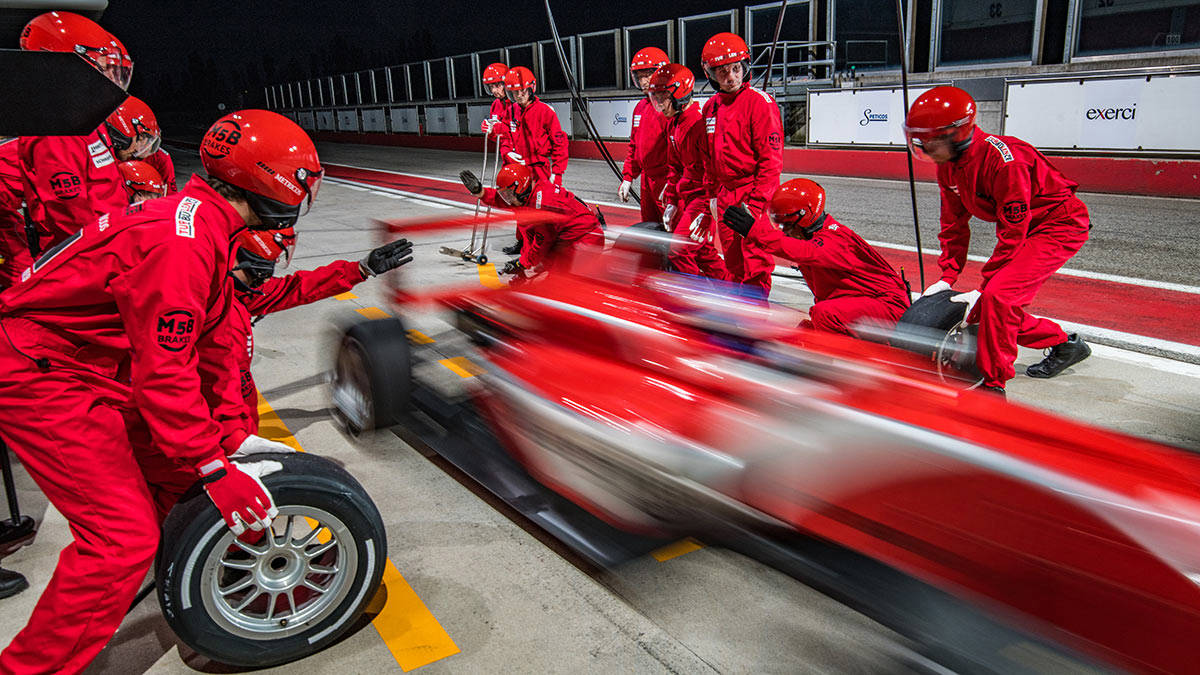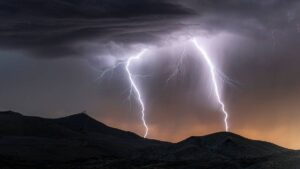Canberra is putting nickel juniors in the fast lane by making battery metals supply a key priority

Pic: Getty
- The Australian Government has given Ardea Resources’ Kalgoorlie Nickel Project major project status
- Ardea’s Andrew Penkethman says nickel miners can be the next iron ore producers as demand from EV batteries skyrockets
- Matt Fernley from the Battery Materials Review says analysts are overstating the supply response to higher nickel prices from Indonesia
Surging demand from electric vehicle batteries could see nickel miners print cash like iron ore giants, the owner of Australia’s largest nickel deposit says.
Ardea Resources (ASX:ARL) boss Andrew Penkethman said nickel miners with long lives ahead of them could see their profitability explode if prices remain high.
Penkethman was speaking after the Kalgoorlie Nickel Project, Australia’s largest undeveloped resource containing more than 6 million tonnes of nickel metal, was awarded major project status by PM Scott Morrison in an election trail announcement in WA’s Goldfields on Friday.
The news sent the firm’s shares up by 5.15% to a three-year high of $1.02. The $173m firm has seen its value spike by 117% over the past six months amid soaring nickel prices and a nickel sulphide discovery at Emu Lake near the KNP.
Nickel prices hit … well you all know the story by now.
Since returning to trade after the market’s meltdown last week the metal has hit the new limit down put in place by the LME to constrain volatility three days in a row to $36,915/t, having previously been suspended at US$48,033/t, raising questions as to whether prices could head lower.
But Penkethman says long term demand for what is emerging as a critical metal is only going to grow.
“I think that future outlook for nickel demand and pricing is incredibly robust,” he told Stockhead.
“We’ve seen demand at record levels and it’s only expected to continue to increase due to existing traditional uses of nickel such as stainless steel, but in particular the rapidly growing expansion of the lithium ion battery sector.
“So the future’s never looked brighter for key lithium ion battery minerals such as nickel.”
Absolute cash cows?
Prices were at 11-year highs of around US$24,000/t before fears Russia’s large nickel supplies could exit the market due to its invasion of Ukraine and a short squeeze focused on bad wrong way bets from the world’s biggest nickel player Tsingshan sent prices soaring.
If prices remain high Penkethman says nickel miners could be the next iron ore sector.
“It will be fascinating to see where it ends up, but let’s say it comes all the way down to US$30,000 a tonne – that’s still an incredible price, all the existing operators will be incredibly profitable,” he said.
“And if we put US$30,000 a ton into the financial model for the KNP, the project would be an absolute cash cow and therein lies the analogy where you’ve got these long life strategic iron ore mines in the Pilbara, you know the quality deposits controlled by the likes BHP (ASX:BHP), Rio Tinto (ASX:RIO), Hancock Prospecting.
“When you’ve got iron ore at US$200 a tonne, we’ve all seen how incredibly profitable those operations are. So I think that’s an analogy for the nickel sector.”
Is forgotten KNP ready for a new cycle?
The KNP is rated as the biggest nickel resource in WA by the Geological Society of WA, even larger than producing monsters like BHP’s Mt Keith and Glencore’s Murrin Murrin.
Formerly owned by Heron Resources before the Ardea spin off in 2017, the deposit has been known about for more than 25 years.
But it has never been developed due to high capital costs and volatile nickel prices.
Back in the early 2000s mining behemoths Vale and BHP were jostling for position in a bid to develop the KNP, with Vale investing ~$35m in a feasibility study.
It was all looking good in 2007 as prices hit then records of US$54,500/t, a period in which BHP’s stainless steel materials division including its nickel mines out-earned its iron ore division.
Within a year that was scuttled by the GFC, which prompted majors to dump investments and reconsider their free-spending, growth hungry ways.
KNP is also a laterite orebody, and a very large one.
It grades at around 0.7% in total, with major cobalt by-product credits and a touch of scandium.
Those tend to be more expensive to operate and run than conventional Australian nickel sulphide mines, and the two that have been developed in Australia — Ravensthorpe and Murrin Murrin — took years to hit their target run rates.
But Penkethman says there is good reason to believe the KNP, which will cost on government estimates $1.165 billion to develop and generate over 1500 jobs in its three-year construction phase, will be delivered in this cycle.
“We can see a competitive laterite operation, operating at full capacity, achieving all in sustaining costs of US$10,000-11,000/t,” he said.
“So, I think laterites can be very cost competitive with sulphides and particularly, if we look at most of the sulphide operations within Australia, they tend to be deeper underground mines as opposed to shallow, generally free dig open pit laterite operations.
“It’s all about laterites hitting nameplate capacity as quickly as possible.
“And the best example of that is Coral Bay in Philippines controlled by Sumitomo where both of the high pressure acid leach autoclaves achieved over 100% nameplate capacity in under 12 months of operation, so it has been done and that’s exactly what Ardea intends to do.”
Ardea intends to produce a mixed hydroxide product suited for the battery market and said increasing demand from that sector had prompted the company to expand its plant scale in an upcoming feasibility study compared to an expansion study to 3.5Mtpa from 2.25Mtpa.
While the study isn’t done yet, Penkethman said Ardea is targeting future production of 35,000tpa of nickel and over 2000tpa of cobalt, which would make the KNP one of the largest standalone nickel mines in Australia.
Indonesian supply not as certain as some think: analyst
While many analysts have updated forecasts for nickel prices on the back of its recent run – Westpac last week updated its year end price from US$18,000/t to US$26,000/t – some have felt new supply from Indonesia would put downward pressure on prices before Russia invaded Ukraine.
Matt Fernley, managing editor of the Battery Materials Review wrote last week that analysts were overstating nickel supply.
He believes analysts are overestimating the increase in class 1 supply from HPAL projects in the coming years with Indonesian authorities getting stricter around the management of waste generated by the low grade deposits.
“Which means that Indonesia won’t be producing 120Ktpa of HPAL-derived nickel by 2023, as most sellside models are suggesting, and they certainly won’t be producing c.60Kt in 2022. In fact, I’d be surprised if they did more than half of that,” he said.
Fernley sees similar problems in class 1 nickel supply from nickel matte, the method Tsingshan has developed in Indonesia to shift from its status as purely a class 2 nickel supplier for stainless steel to supplying the fast-growing battery market.
He says it will likely be too power-intensive to satisfy ESG-conscious Western end users.
“Demand growth rates of 6-8% are likely over the next five years,” he wrote.
“Supply of battery grade nickel was unlikely to match that even before the Ukraine crisis.
“With Russian production now likely to be embargoed for an extended period, I see the market being very tight indeed in the near-term. That should help nickel prices to re-rate from current levels.”
Strategic power
Speaking in Kalgoorlie-Boulder on Friday PM Scott Morrison said the Russian invasion of Ukraine had highlighted the importance of bolstering local supply chain for battery minerals.
It came a day after the announcement of a $120 million grant for a battery precursor plant in Kalgoorlie being developed by Pure Battery Technologies alongside its partnership with local nickel explorer Poseidon Nickel (ASX:POS).
“If there’s one thing we’ve learned, particularly with the invasion of Ukraine from Russia and the pressures that we’ve faced here in Australia … is that you need a secure supply,” Morrison told scribes in the Wild West town.
“Australia can deliver for that, and that’s great for our national security and it’s great for our economy.”
Penkethman said given its enormous size the KNP “must be developed” as the world faces at ongoing supply deficits for the key battery metal.
“I think it’s the Australian Federal Government recognising that the KNP is a strategic project for Australia,” he said.
“It is the largest nickel cobalt resource in Australia. It simply has to be developed to ensure sustainable and ethical mineral supply in response to the lithium ion battery sector.”
Ardea Resources share price today:
Related Topics
UNLOCK INSIGHTS
Discover the untold stories of emerging ASX stocks.
Daily news and expert analysis, it's free to subscribe.
By proceeding, you confirm you understand that we handle personal information in accordance with our Privacy Policy.








